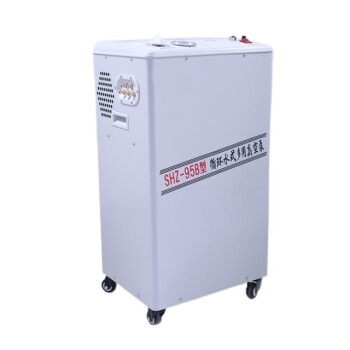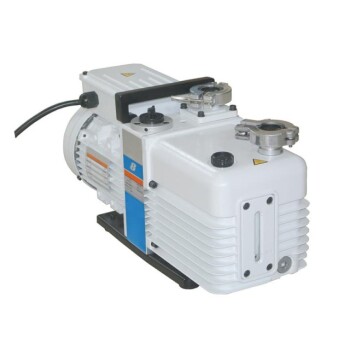A vacuum pump operates by creating a pressure difference, moving gas molecules from a high-pressure area to a low-pressure area. Contrary to the common misconception of "sucking," a vacuum pump actually pushes gas molecules. This process involves altering pressure states to achieve a vacuum. Understanding this mechanism is crucial for selecting the right lab vacuum pump for specific applications, as it ensures efficient operation and proper functionality in laboratory settings.
Key Points Explained:

-
How a Vacuum Pump Works:
- A vacuum pump functions by creating a pressure differential, moving gas molecules from a high-pressure region to a low-pressure region.
- It does not "suck" air but rather pushes gas molecules, which is a critical distinction in understanding its operation.
-
Pressure Differential Mechanism:
- The pump introduces a low-pressure space, causing gas to naturally flow from the high-pressure area to the low-pressure area.
- This flow continues until the pressures in both regions equalize, achieving the desired vacuum state.
-
Common Misconception: Sucking vs. Pushing:
- Many people mistakenly believe that vacuum pumps "suck" air. However, the correct understanding is that they push gas molecules.
- This clarification is essential for proper usage and maintenance of lab vacuum pumps.
-
Importance in Laboratory Settings:
- Understanding the push mechanism of vacuum pumps is vital for selecting the appropriate equipment for specific laboratory tasks.
- It ensures that the pump operates efficiently and meets the requirements of various applications, from filtration to degassing.
-
Applications of Vacuum Pumps:
- Vacuum pumps are used in a wide range of laboratory applications, including vacuum filtration, distillation, and desiccation.
- Knowing how they work helps in optimizing their use and achieving accurate and reliable results in experiments.
By comprehending the fundamental principles of how a vacuum pump operates, users can make informed decisions when selecting and utilizing lab vacuum pumps in their scientific endeavors. This knowledge not only enhances the efficiency of laboratory processes but also ensures the longevity and proper functioning of the equipment.
Summary Table:
| Key Point | Description |
|---|---|
| How a Vacuum Pump Works | Creates a pressure differential, pushing gas molecules from high to low pressure. |
| Pressure Differential Mechanism | Introduces a low-pressure space, causing gas flow until pressures equalize. |
| Sucking vs. Pushing | Misconception: Pumps push, not suck, gas molecules. |
| Importance in Labs | Ensures efficient operation and proper functionality in laboratory applications. |
| Applications | Used in filtration, distillation, desiccation, and more. |
Ready to optimize your lab’s efficiency? Contact us today to find the perfect vacuum pump for your needs!










